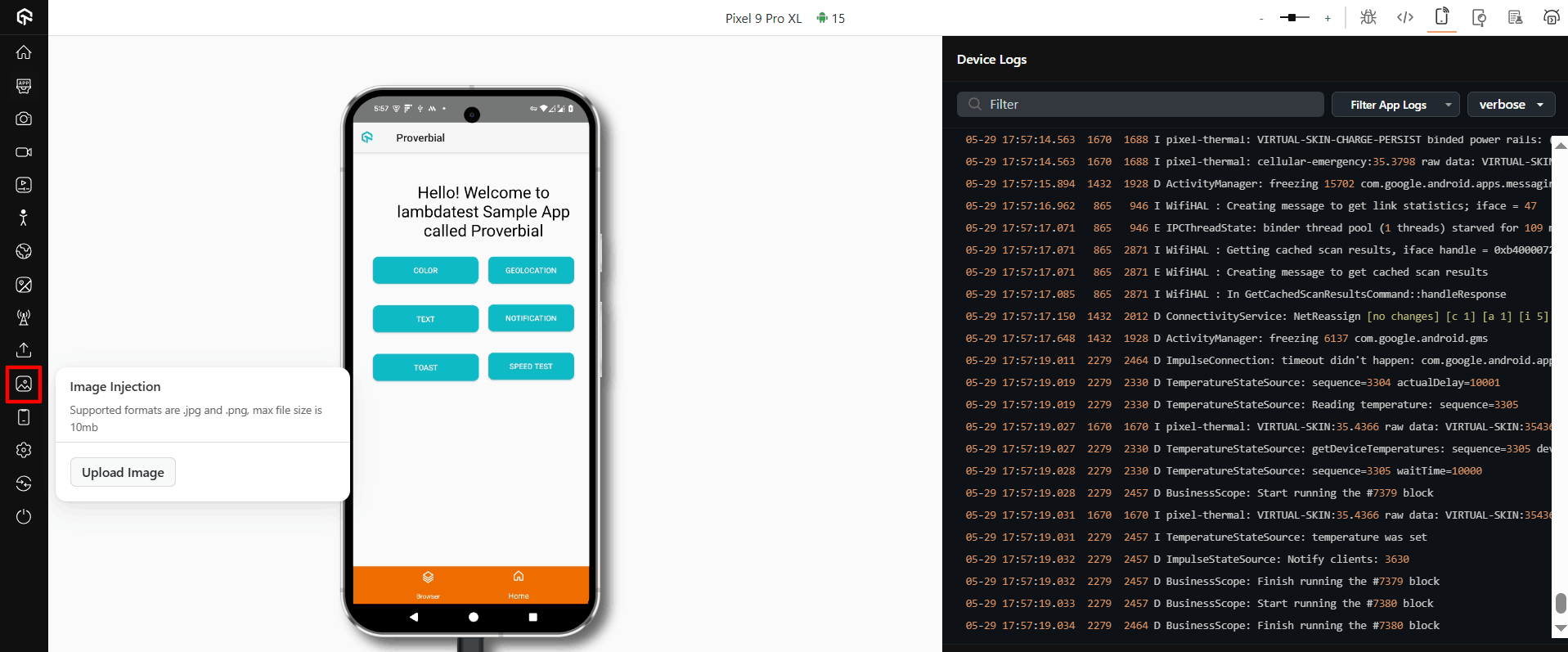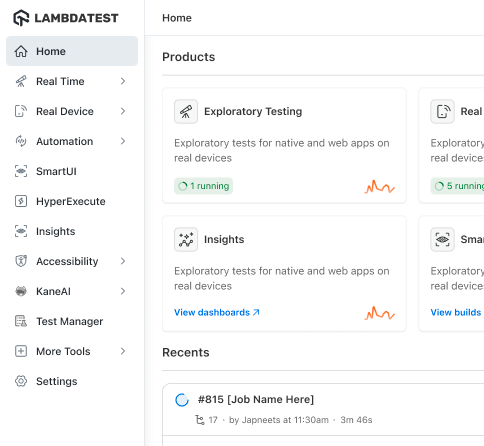Test QR Codes: How to Get Started
Harish Rajora
Posted On: June 2, 2025
![]() 127874 Views
127874 Views
![]() 12 Min Read
12 Min Read
QR codes provide instant access to content, streamline navigation, and enable secure, contactless payments. Therefore, its important to test QR codes before adding them to websites, mobile apps or in-store displays. This ensures the QR code scan correctly, direct users to the intended destination, and function across a range of platforms.
TABLE OF CONTENTS
Overview
QR code testing ensures that a QR code scans correctly and directs users to the intended destination across different devices, browsers, and environments. It checks for proper functionality under various conditions like low light or angled scans. This helps prevent broken links and ensures a smooth user experience.
How to Test QR Codes?
Following are the steps to perform QR code testing:
- Validate the QR Code: Confirm the code is correctly generated and not corrupted.
- Scan for Accuracy: Test if the code retrieves the intended data or link.
- Check for Errors: Handle issues like broken links, poor internet, or invalid content.
- Define Test Metrics: List metrics based on business goals, like scan success rate or conversion.
- Test Across Devices: Use various devices, OS versions, and form factors.
- Track Performance: Measure how the code performs across devices and fix issues.
- Verify Backend Integration: Ensure backend systems correctly log and process scan data.
- Check Security: Validate authentication and server-side setup for potential vulnerabilities.
- Include in Regression Tests: Regularly test QR codes after system updates to avoid future issues.
Benefits of Testing QR Codes
Here are a few benefits of QR code testing:
- Ensures Compatibility: Works smoothly across all devices and platforms.
- Detect and Fix Issues Early: Identifies problems before launch to avoid failures.
- Validate Data Accuracy: Ensures backend tracking and analytics are correct.
- Support Ongoing Stability: Keeps QR codes functioning after updates and changes.
- Maintain Security: Protects against vulnerabilities in code and related systems.
What Are QR Codes?
QR codes (or Quick Response codes) are barcodes containing black squares on a white background. Along with these squares, a lot of markers are also present that do not represent any shape but are readable by a reading device such as a camera.
This arrangement of squares and markers embeds information encoded in the form of numerics, alphanumeric, binary, or kanji. A popular example of a QR code is embedding URL information to open a website by scanning the code.
Tests your QR code across 5000+ real devices. Try LambdaTest Now!
Benefits of Using QR Codes
From file-sharing links to payment-linked methods, QR codes have captured most domains that require sharing information, especially on a large scale.
Benefits:
- Instant Access: Provide instant access to a wide range of information, from product details and website links to contact information and social media profiles.
- User Convenience: Simplify accessing information and create a more seamless and engaging user experience.
- Contactless Interaction: Offer a contactless way to share information, make payments, or access services.
- Cost-Effective Marketing: Provide a cost-effective way to reach customers through marketing materials.
- Data Storage: Store various types of data such as text, URLs, location, contact details, and images.
How to Test QR Codes?
Testing QR codes is important to ensure they are accurately readable and redirect users to the intended information or action without errors. This helps enhance user experience and prevent potential issues. Testing QR codes involves several steps to ensure their functionality and readability.
In this section, we will look into some standard steps to test QR codes.
- Ensure the QR code Is Perfect: The first step of testing is to ensure that the QR code is valid.
- Scan for Verification: The next step is to start the scanning process on a higher level. The main aim at this level is to ensure that the data integrated into the QR code can be retrieved successfully.
- Scan for Errors: Many things can go wrong while scanning a QR code. Sometimes, the Internet connectivity is unpredictable, or the link is broken. Such errors should be handled by the team of testers and developers so that the user gets clarification on why things did not work.
- List Down Metrics: Once the primary check is completed, the tester needs to dive into the depth of QR code testing and list down all the metrics to be tested for performance. The metrics depend on the final aim of the QR code and its business association.
- Choose Diverse Scanning Devices: Next, test QR codes on a variety of devices, operating systems, and versions. Include tablets, TVs, and dedicated scanners if they’re likely to be used.
- Track Performance Metrics: The performance metrics should be tracked now against all the selected devices. The metrics should be analyzed, and if there are any issues, they should be reported back to the developers.
- Test the QR Code Associated With the Backend: The QR code is also related to the backend of the mobile application. For instance, some QR codes are involved in data metrics where a data processing engine takes note of how many QR codes were scanned, from which geographical locations, and whether the conversion occurred or not.
- Ensure the Security of the Setup: Two security holes can exist in QR codes. First, it is incorporated into the code for authentication purposes in which only select devices can access complete data. Second, the application infrastructure is associated with the QR code on the server side.
- Keep QR Code Tests in Regression: New software updates on browsers or operating systems can still impact QR code scanning, even if the QR-related infrastructure remains unchanged. To prevent issues, it’s best to include QR tests in regression testing or run them in separate automation cycles.
Testing QR Code Online Using Camera Injection
To test QR codes online, you can leverage cloud testing platforms such as LambdaTest. It provides a camera injection feature to test QR codes on a real device cloud of Android and iOS devices. The platform uses sensor instrumentation that facilitates hardware use in applications such as cameras. This can be done by enabling image injection for the session.
Follow the below steps to test QR codes with camera injection feature:
Step 1: Go to the Real Device section from the LambdaTest Home page.
Step 2: Choose your desired device for testing and upload your app.
Step 3: Click on your app and then on the Settings icon that appears. After that, enable the Image Injection toggle button and click Save Changes.

Step 4: Click Start to launch the test session. Next, click on the image injection icon, then click Upload Image.

Step 5: Upload the QR code that you want to test.

Once the QR code is uploaded, open your camera app. When the camera launches and you capture an image, a black screen may appear. Proceed by selecting that captured image, after which the black image will be replaced with the injected image (the QR code).
For more information, check out this documentation on QR code testing using camera image injection.
Best Practices to Test QR Codes
To ensure a confident release, here are some best practices that help you thoroughly validate every important test scenario for QR code:
- Consider All Age Groups: When testing a QR code, it’s crucial to consider all age groups to ensure everyone can scan it. Different age groups perceive QR codes differently.
- Consider All Devices: Devices vary in hardware and software configurations, making it hard to predict potential issues. Testing the QR code feature on a wide range of real devices is essential. Using online platforms like LambdaTest can reduce costs while providing accurate testing metrics.
- Consider Environmental Factors: QR codes can be scanned in various environments, from shops to billboards. Factors like poor lighting can affect scans. Testers must ensure QR codes work smoothly in different conditions, as users expect a seamless experience regardless of environmental challenges.
- Think Like a User: To improve QR code testing, testers should adopt an end-user perspective, identifying potential issues and creating a comprehensive list of test scenarios. This approach minimizes the chance of failures post-release.
Conclusion
QR codes are widely recognized and used by all end-users, therefore, it is expected to function flawlessly across all compatible web browsers and mobile devices. This is where QR code testers play a crucial role. They must ensure that each QR code fulfills its intended purpose.
Although this task can be challenging, our guide provides a step-by-step approach for effective QR code testing and best practices to ensure accuracy. Successful testing requires skill, keen observation, and platforms like LambdaTest, which allow you to test QR codes remotely without needing physical devices.
Frequently Asked Questions (FAQs)
How do I test a QR code?
A QR code can be tested by owning a physical device and scanning the code through the camera application installed on it. However, testing should include multiple devices and preferably a platform where automation is supported along with real devices. This helps ensure the application does not fail due to a device configuration failure.
How can I check my QR code?
Scan the QR code with multiple devices to confirm it accurately links to or displays the intended content. Additionally, use online QR code verification tools to validate its functionality and correctness.
How to generate a QR code for testing?
Use a QR code generator tool to create a code with the desired content or URL. Ensure to test the generated code with various scanners and devices to confirm it performs as expected.
Why does the camera show a black image when testing QR code scanning in the cloud?
A black image may appear as a placeholder before the injected image is rendered. This is normal in image injection workflows. After proceeding with the “Use Photo” or equivalent action, the black screen is typically replaced with the QR code image for testing purposes.
Can I test different types of QR codes (e.g., URLs, contact info, payment data)?
Yes, you can test various types of QR codes by generating them with the appropriate data format. Make sure your app is designed to handle each specific type (e.g., opening a browser for URLs, saving contact info, or triggering payment workflows), and verify the expected behavior during testing.
Is it possible to automate QR code scanning tests in CI/CD pipelines?
Yes, with the help of image injection or mocked camera inputs, you can automate QR code scanning tests as part of your CI/CD process. Tools that support simulated camera input or preloaded test media make it feasible to validate QR code workflows without manual interaction.
Citations
- Usability Testing on QR Code Scanner Application for Lecture Presence: https://www.researchgate.net/publication/341937670
Got Questions? Drop them on LambdaTest Community. Visit now













